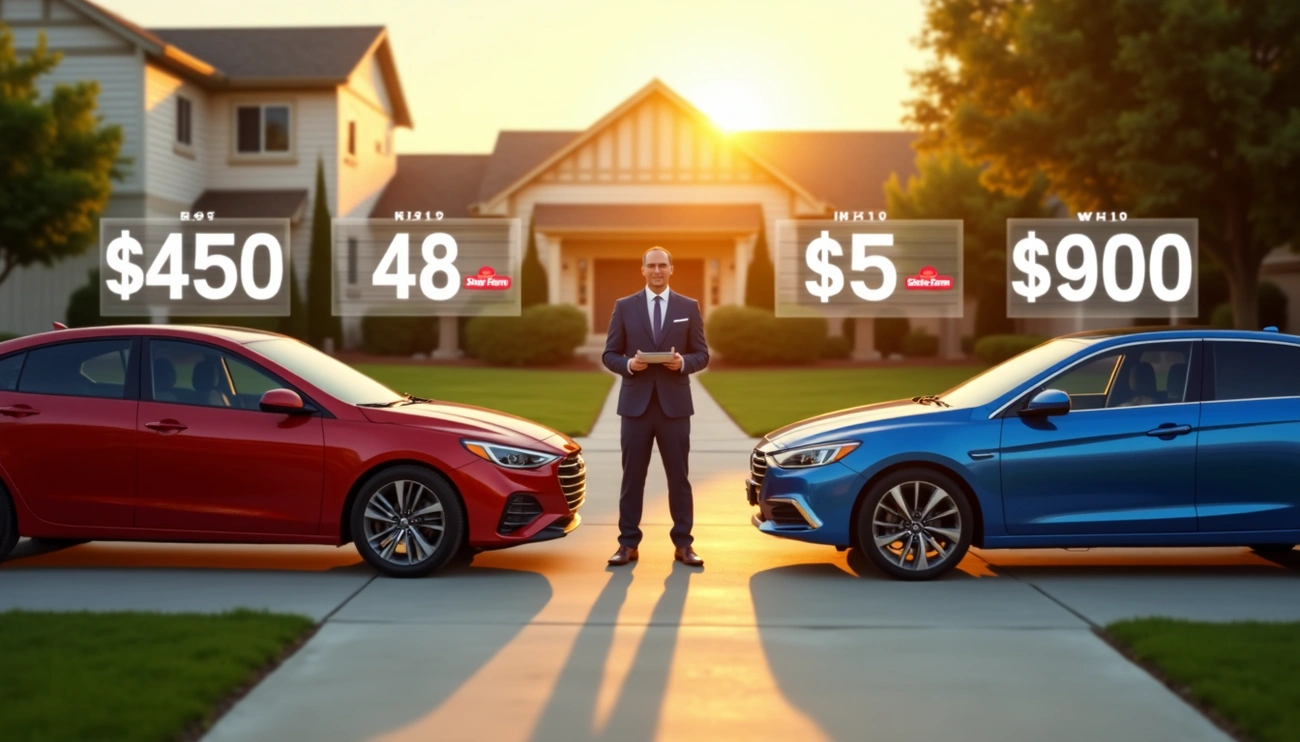Did you know that 27.5 million Americans live without insurance for poor people despite the serious financial risks this creates?
When you’re struggling to pay bills, insurance premiums might seem like an expense you can cut. However, going without coverage can lead to devastating medical debt if unexpected health issues arise. Many people believe quality insurance is completely out of reach when money is tight, but that’s not always true. In fact, there are several programs specifically designed to provide low income medical insurance options for families and individuals with limited financial resources.
We understand the frustration of thinking “I need health insurance but I have no income” or feeling trapped because you can’t afford health insurance. That’s why we’ve created this straightforward guide. Throughout this article, we’ll walk you through government programs, marketplace subsidies, and affordable alternatives that can help you get covered without breaking the bank.
Whether you’re looking for medical insurance for poor people, car insurance for low-income drivers, or insurance for your entire low income family, these strategies can help you find protection without sacrificing your basic needs.
Understanding the Cost of Being Uninsured
Going without health insurance creates serious financial and health risks that many Americans face daily. More than 28 million individuals currently lack coverage, putting their physical, mental, and financial wellbeing in jeopardy. Let’s explore why this matters and what options exist for those seeking insurance for low income situations.
Why skipping insurance can be risky
The financial consequences of being uninsured can be devastating. While the average out-of-pocket expenses for someone uninsured for a full year might seem comparable to those with private insurance ($426 versus $402 in 1996), this number is misleading. Uninsured families typically earn substantially less—their median annual family income ranges between $20,000-$29,000, compared to over $50,000 for privately insured households.
Furthermore, hospital visits become especially problematic. Emergency department visits can cost thousands of dollars, particularly for major health issues. Although hospitals often reduce charges for uninsured patients, these individuals must submit to probing questions about their finances and may feel stigmatized accepting charity.
The health risks are equally concerning. Without insurance, many people delay or completely avoid necessary medical care. Uninsured adults are much less likely to:
- Receive preventive screenings or vaccinations
- Have a regular source for healthcare
- Benefit from early detection of medical problems
Consequently, uninsurance has become the sixth leading cause of death among people ages 25-64—ranking after cancer and heart disease but before HIV/AIDS or diabetes.
States where insurance is legally required
Although the federal penalty for lacking health insurance ended in 2019, several states maintain their own requirements:
- California: Residents must have minimum essential coverage or pay the higher of $900 per adult ($450 per dependent child) or 2.5% of income above filing threshold
- Massachusetts: Requires coverage that meets minimum creditable coverage standards with penalties based on income, age, and family size
- New Jersey: Implemented the Health Insurance Market Preservation Act requiring residents to obtain qualifying coverage or make shared responsibility payments
- Rhode Island: Requires qualifying health insurance with penalties for non-compliance
- District of Columbia: Requires health insurance for residents of all ages
Vermont also has an individual mandate but doesn’t impose financial penalties.
Common reasons people go without coverage
Affordability stands as the primary barrier to coverage. In 2023, 63.2% of uninsured adults cited cost as their main reason for lacking insurance. Additionally, many working Americans lack access to employer-provided benefits—64.7% of uninsured workers were employed at companies that didn’t offer health coverage.
Other frequently cited reasons include:
- Not being eligible for coverage (27.0%)
- Not needing or wanting coverage (26.6%)
- Finding the sign-up process too difficult or confusing (23.9%)
Women, adults aged 50-64, and those in poor health report affordability issues more frequently. Meanwhile, men, younger adults (18-29), and those in better health more commonly say they don’t need coverage.
Moreover, among adults who had previously purchased individual market insurance but dropped it, affordability was again the top reason cited. This challenge particularly affects lower-income households—58% of uninsured adults had incomes below 200% of the federal poverty level ($24,120 for individuals, $49,200 for a family of four).
Government Programs That Can Help
When your budget is stretched thin, government health programs offer vital safety nets that many don’t realize they qualify for. These programs provide comprehensive coverage for millions of Americans who might otherwise remain uninsured.
Medicaid: Who qualifies and how to apply
Medicaid serves as America’s largest source of health coverage, helping low-income families, children, pregnant women, elderly adults, and people with disabilities. Eligibility varies by state, but generally depends on:
- Income level
- Household size
- Pregnancy status
- Age
- Disability status
Many states have expanded their Medicaid programs to cover all people below certain income thresholds. Even if you think your income is too high, you should still apply—you might qualify based on other factors, especially if you have children, are pregnant, or have a disability.
You can apply for Medicaid year-round in two main ways:
- Through the Health Insurance Marketplace (Healthcare.gov), which automatically forwards your information to your state Medicaid agency if you appear eligible
- Directly through your state Medicaid agency
When applying, you’ll typically need documents including:
- Proof of identity
- Social Security numbers for household members
- Income verification (paystubs, W-2s)
- Proof of citizenship or immigration status
After submitting your application, states may take up to 45 days to process it, longer if disability determination is needed.
CHIP: Health insurance for children and pregnant women
The Children’s Health Insurance Program (CHIP) covers children in families that earn too much for Medicaid but still struggle to afford private insurance. In some states, CHIP also covers pregnant women.
CHIP provides comprehensive benefits including:
- Routine check-ups and immunizations
- Doctor visits
- Dental and vision care
- Prescriptions
- Hospital care (inpatient and outpatient)
- Laboratory and X-ray services
- Emergency services
The program is remarkably affordable—routine “well child” doctor and dental visits are completely free. While some states charge monthly premiums or copayments for other services, costs never exceed 5% of your family’s annual income.
Since 2009, states have had the option to cover lawfully residing immigrant children and pregnant individuals without the 5-year waiting period previously required. As of 2023, 38 states have implemented this option for children, with many also extending coverage to pregnant individuals.
Basic Health Program: Available in select states
For those who earn too much for Medicaid but still find Marketplace plans unaffordable, the Basic Health Program (BHP) offers another option, though it’s currently available in only three states: Minnesota, New York, and Oregon.
BHPs target individuals with incomes between 138% and 200% of the federal poverty level who don’t qualify for Medicaid. The program also assists lawfully present non-citizens with incomes below 138% FPL who can’t access Medicaid due to immigration status.
These programs offer significant advantages:
- More affordable than Marketplace plans
- Reduced “churning” between different insurance programs
- Comprehensive coverage including all essential health benefits
For instance, Minnesota’s MinnesotaCare charges premiums ranging from $0 to $28 monthly with no deductibles and minimal copayments. Similarly, New York’s Essential Plan requires $0 premiums with equally low cost-sharing.
The federal government funds BHPs with 95% of what it would have spent on Marketplace subsidies for the same population, making these programs both beneficial for participants and financially viable for states.
Marketplace Subsidies and Income-Based Plans
“Across the nearly 20 million people who received premium subsidies in 2024, the average after-subsidy premium was about $74/month.” — Louise Norris, Health policy analyst and licensed health insurance broker
Beyond government programs, the Affordable Care Act offers financial assistance that can dramatically reduce insurance costs for those with limited incomes. These subsidies make what seems unaffordable much more accessible for families struggling to make ends meet.
How premium tax credits work
Premium tax credits are refundable credits designed to lower your monthly insurance payments when purchasing coverage through the Health Insurance Marketplace. Essentially, these credits reduce what you pay each month for your plan’s premium – the regular payment you make to keep your insurance active.
The amount of your credit depends on your household income and the cost of plans in your area. Your expected contribution toward premium costs increases on a sliding scale based on income. For instance, if your income is between 100% and 150% of the federal poverty level, the benchmark Silver plan will cost you $0. At higher incomes, you’ll pay a percentage of your household income toward premiums.
Most importantly, these credits are taken upfront – paid directly to your insurance company so you pay less each month. Alternatively, you can choose to receive the full credit when filing your tax return.
What are cost-sharing reductions?
Cost-sharing reductions (CSRs) are additional savings that lower what you pay out-of-pocket when receiving care. Unlike premium credits, CSRs only apply if you select a Silver plan. These reductions help decrease:
- Your deductible (the amount you pay before insurance kicks in)
- Copayments and coinsurance (what you pay at each visit)
- Your out-of-pocket maximum (the yearly limit on your spending)
For example, if a standard Silver plan has a $750 deductible, with cost-sharing reductions it might drop to $300 or $500, depending on your income. Similarly, a $30 copay for doctor visits might become $15 or $20.
To qualify, your income must be between 100% and 250% of the federal poverty level. The lower your income within this range, the more substantial your savings.
How to check if you qualify for ACA subsidies
To determine if you’re eligible for these savings, start by gathering information about your household income, family size, and citizenship status. Initially, you can estimate using your adjusted gross income plus any modifications required for ACA calculations.
Subsequently, complete an application through Healthcare.gov or your state’s Marketplace. After submitting your information, you’ll receive an eligibility determination that specifies which subsidies you qualify for.
Look for phrases like “Can choose a health plan with lower copayments, coinsurance, and deductibles” followed by codes like (04), (05), or (06) on your notice – these indicate you qualify for cost-sharing reductions.
Remember, 94% of Kansas Marketplace enrollees received premium subsidies averaging $561 per month in early 2024, dropping their average premium to just $103 monthly. Through these subsidies, affordable coverage may be more accessible than you think.
Affordable Alternatives If You Don’t Qualify
If traditional government programs and subsidies aren’t options for you, several affordable alternatives remain accessible. Finding insurance for poor people requires exploring these less-known pathways to protection.
Using your state’s health insurance marketplace
Even without qualifying for subsidies, state marketplaces offer standardized plans that meet essential health benefit requirements. These exchanges allow you to compare coverage options side-by-side, making it easier to find affordable plans. During annual open enrollment (typically November through January), you can browse all available options regardless of income level.
Furthermore, catastrophic health plans become available to those under 30 or those who qualify for hardship exemptions. These plans feature lower monthly premiums but higher deductibles, providing basic protection against worst-case scenarios.
Buying directly from insurance companies
Contacting insurers directly sometimes reveals plans not listed on marketplaces. These off-exchange plans might offer unique benefits or network arrangements better suited to your specific needs. Additionally, some insurers provide payment plans or discounts for annual payments that can ease financial strain.
Nevertheless, when purchasing directly, carefully verify that plans meet your state’s minimum coverage requirements to avoid potential penalties.
Exploring telemedicine and virtual care options
Virtual care subscriptions have emerged as affordable alternatives for basic healthcare needs. Services like K Health ($29/month) and Sesame Care (visits starting at $25) provide access to medical professionals without traditional insurance. Accordingly, these platforms can address routine health concerns, prescription refills, and minor illnesses without expensive office visits.
Community health centers and sliding scale clinics
Federally Qualified Health Centers (FQHCs) serve anyone regardless of ability to pay. These centers offer primary care, dental services, mental health support, and prescription assistance on income-based sliding fee scales.
Indeed, FQHCs typically charge between $20-$80 for office visits depending on your income level, with some centers starting as low as $10 per visit. To locate your nearest FQHC, visit findahealthcenter.hrsa.gov and enter your zip code.
Hill-Burton facilities likewise provide free or reduced-cost care based on income eligibility, typically assisting those earning up to twice the federal poverty level.
How to Apply and Get Covered
Taking action to get covered requires understanding exactly what paperwork you need and where to submit your application. Let’s navigate the actual application process to secure affordable healthcare coverage.
Documents you’ll need to apply
Gathering the right documents beforehand streamlines your application process. Typically, you’ll need:
- Identification information: Social Security numbers and birth dates for everyone in your household applying for coverage
- Proof of income: Recent pay stubs, W-2 forms, tax returns, or Social Security statements
- Citizenship/immigration documentation: Birth certificates or immigration papers
- Address verification: Utility bills or rental agreements
- Current insurance information: Details about any existing coverage
For income verification, it’s essential to provide your most accurate estimate of both monthly and annual income, including unemployment benefits if applicable.
Where to apply: Marketplace vs. Medicaid office
You have two primary options for submitting your application:
Health Insurance Marketplace (Healthcare.gov): With one application, you’ll find out if you qualify for Marketplace plans with savings, Medicaid, or CHIP. This option works well if you’re unsure which program fits your situation. You can apply online, by phone at 1-800-318-2596, through certified enrollment partners, or by mailing a paper application.
Direct Medicaid application: Applying directly through your state Medicaid agency can sometimes be faster if you’re confident you qualify. Each state has different requirements and processes.
Tips for applying with no income
Often, people think “I need health insurance but I have no income” means they won’t qualify. In reality:
- Always apply regardless of your current income situation
- Check the box requesting a “full Medicaid determination” on your application
- If asked about income, include any unemployment benefits, interest income, or withdrawals from retirement accounts
- Be aware that your state might still determine you eligible based on medical needs even with higher income
- Remember there’s no limit to how many times you can apply
If your application is denied, you’ll receive a notice explaining why and, in most cases, your information will be securely sent to the Marketplace for consideration of other options.
Conclusion
Finding Coverage When Money Is Tight
Securing health insurance while struggling financially certainly feels overwhelming, but countless affordable options exist for individuals and families at every income level. Throughout this guide, we’ve explored government programs like Medicaid and CHIP that provide comprehensive coverage at little to no cost for those who qualify. Additionally, marketplace subsidies can transform seemingly expensive plans into budget-friendly options, with many Americans paying less than $100 monthly for quality coverage.
Above all, remember that your health deserves protection regardless of your financial situation. The risks of remaining uninsured—from catastrophic medical debt to delayed care and worsened health outcomes—far outweigh the challenges of navigating these programs.
The application process might seem daunting at first, but gathering your documents and submitting through Healthcare.gov or your state’s Medicaid office represents a straightforward path to coverage. Many people qualify for assistance without realizing it, especially those with children, disabilities, or specific medical needs.
Ultimately, everyone deserves access to healthcare without financial ruin. Therefore, we encourage you to explore the options outlined in this guide—whether through government programs, subsidized marketplace plans, community health centers, or telemedicine services. Your health and financial security depend on taking this essential step, and affordable coverage awaits those who seek it out.
FAQs
Q1. How can low-income individuals access health insurance? Low-income individuals can access health insurance through government programs like Medicaid and CHIP, or by applying for subsidies on the Health Insurance Marketplace. These options can provide comprehensive coverage at little to no cost for those who qualify.
Q2. What are the income requirements for marketplace insurance subsidies? Eligibility for marketplace subsidies typically starts at 100% of the Federal Poverty Level (FPL) and can extend up to 400% FPL or higher in some cases. For 2025, this means a single person earning between $15,060 and $60,240 annually may qualify for assistance.
Q3. What options are available if I don’t qualify for government programs or subsidies? If you don’t qualify for government programs or subsidies, consider exploring catastrophic health plans, telemedicine services, or community health centers. These alternatives can provide basic coverage or affordable care options for those with limited financial resources.
Q4. How do I apply for health insurance if I have no income? Even with no income, you should still apply for coverage through the Health Insurance Marketplace or your state’s Medicaid office. Be sure to request a “full Medicaid determination” and include any potential sources of income, such as unemployment benefits or interest income.
Q5. What documents do I need to apply for health insurance? When applying for health insurance, you’ll typically need identification information (like Social Security numbers), proof of income, citizenship or immigration documentation, address verification, and information about any current insurance coverage you may have.















Leave a Reply